When it comes to our furry friends, we often think we know them inside out. They wag their tails for treats and give us those puppy eyes when they want a belly rub. But dogs, just like humans, have their moments of stress, and sometimes, it’s not so easy to spot. Recognizing the signs can help you provide comfort and care when your pup is feeling overwhelmed. Here are 14 things your dog might do that actually mean, “I’m stressed.”
1. Excessive Licking

You might notice that your dog is licking their paws or body more than usual. While some licking is normal, excessive licking can be a sign of stress or anxiety. According to Dr. Karen Becker, a proactive and integrative wellness veterinarian, licking can release endorphins that help soothe dogs, but it can also become obsessive over time. If you see this behavior, consider what may be stressing your dog out, whether it’s a change in routine or a new visitor in the house. Keeping an eye on this habit can help you determine if it’s time for a vet visit or a change in your dog’s environment.
When a dog becomes stressed, it’s natural for them to seek comfort in familiar habits. Licking is one of those behaviors that can feel calming and repetitive, which might be why your dog resorts to it. Ensure you’re providing enough mental and physical stimulation to prevent boredom-induced stress. Interactive toys or a new walking route can sometimes do wonders for an anxious pup. If the licking leads to raw or irritated skin, you should consult with a vet to rule out allergies or other underlying issues.
2. Pacing Or Restlessness
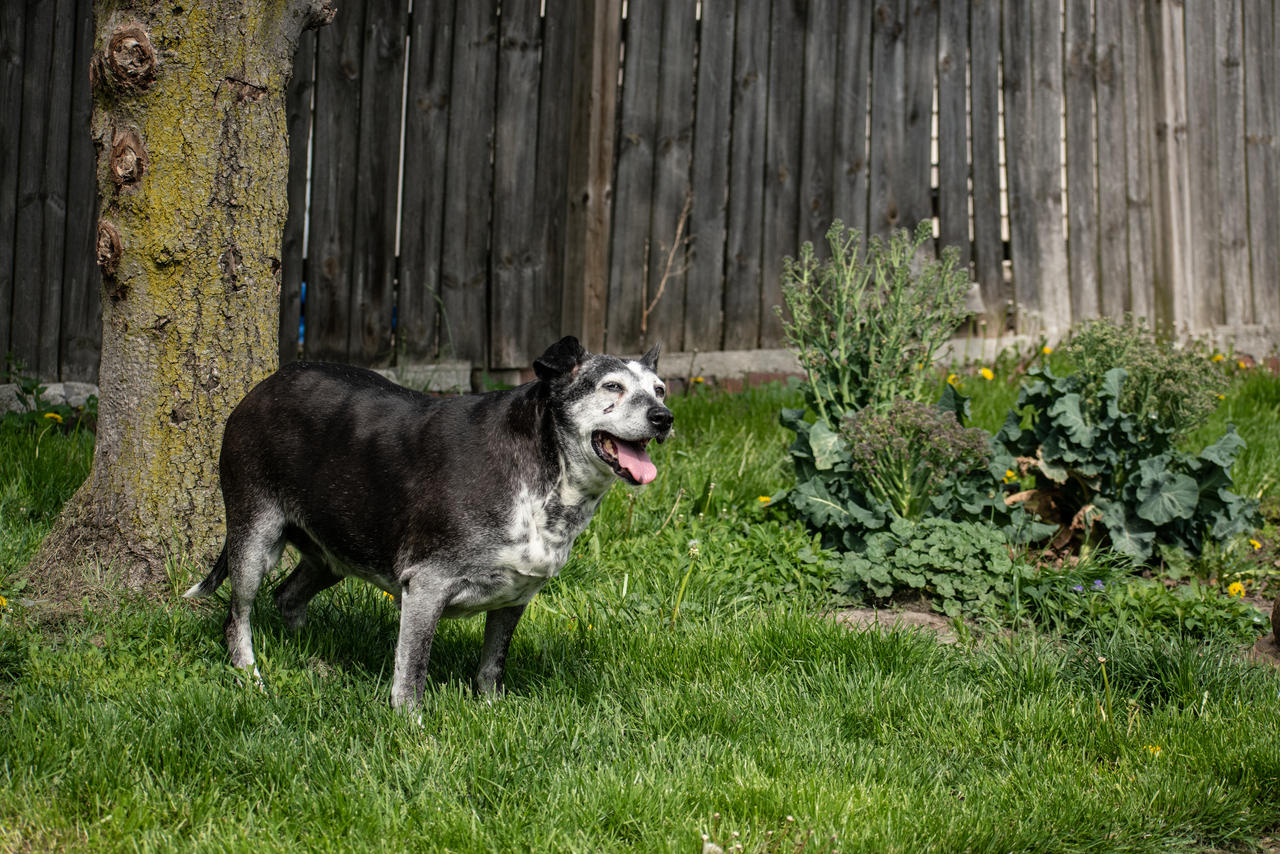
If your dog can’t seem to settle down, pacing back and forth, it may be more than just restlessness. Dogs often pace when they’re anxious, and it’s their way of telling you something isn’t right. Pacing can be a way for your dog to burn off nervous energy or cope with a situation that’s making them uncomfortable. Observe when your dog is most restless. Is it during thunderstorms, when you leave for work, or when they’re in a new environment?
Try to identify any triggers that might be causing this behavior and address them if possible. Providing a calm and safe space for your dog to retreat to can help manage their stress. You might also try a Thundershirt or calming supplements if your dog’s anxiety is situational, like during fireworks. In persistent cases, consult with a professional to explore behavior modification techniques. The more attentive you are to the reasons behind the pacing, the better you’ll be at helping your dog feel secure.
3. Yawning

Yawning isn’t just a sign that your dog is sleepy. Dogs also yawn when they’re feeling stressed or anxious. According to Dr. Stanley Coren, a canine expert and psychologist, yawning can be a signal of unease, especially if it occurs in situations where your dog is typically alert, like during a vet visit. Pay attention to when your dog yawns. If it’s happening more often when they’re around strangers or in new environments, they’re likely trying to calm themselves down.
Understanding your dog’s yawning in different contexts can help you support them better. It’s similar to how humans might sigh when under stress. Offering your dog a break from whatever is causing their anxiety can help them reset and relax. Consider giving your dog a quiet space or distracting them with a favorite toy or treat. Noticing these subtle cues can make a big difference in how your dog experiences stress.
4. Changes In Appetite

Has your dog suddenly stopped eating or become a more voracious eater than usual? Changes in appetite can be a telltale sign of stress in dogs. If your pup is skipping meals or has a reduced interest in food, it’s important to consider recent changes in their environment or routine. Stress can affect digestion and make eating less appealing to them. On the other hand, some dogs may eat more as a comfort mechanism.
Monitoring your dog’s eating habits closely can help you determine if stress is the culprit. A temporary change in appetite might not be alarming, but ongoing issues warrant a closer look. Providing consistency in meal times and a comfortable eating environment can help ease their stress. If your dog continues to show changes in appetite, a vet check-up is essential to rule out other health issues. The sooner you address the cause, the happier and healthier your dog will be.
5. Avoidance Or Hiding

If your dog is suddenly hiding under the bed or avoiding interaction, they might be feeling stressed. This behavior is often seen when dogs are anxious about something in their immediate environment, like loud noises or unfamiliar guests. According to Dr. Sophia Yin, a renowned veterinarian and animal behaviorist, avoidance is a common stress response in dogs who feel overwhelmed and seek safety. It’s your dog’s way of saying they need a break from whatever is causing their discomfort.
Respect your dog’s need for space and try not to force interaction. Instead, create a peaceful spot where they can retreat without being disturbed. Observe what might be causing the avoidance and consider gradual desensitization tactics if it’s a recurring issue, like the vacuum cleaner or the mailman. Providing positive reinforcement when they face their fears can also slowly help reduce anxiety. Remember, patience and understanding are key to helping your dog overcome stress-related avoidance.
6. Whining Or Barking

Frequent whining or barking, especially when there’s no apparent reason, can be a sign your dog is stressed. Dogs use vocalizations to communicate, and when they’re anxious, they might become more vocal. This behavior can be particularly noticeable if your dog is normally quiet. Barking or whining can be their way of seeking comfort or alerting you to something that’s bothering them. It can also be a sign of separation anxiety if your dog exhibits these behaviors when you’re not home.
To help alleviate their stress, try to understand the source of their vocalization. If they’re barking at every little noise, they might be reacting to stimuli that you haven’t noticed. Providing background noise, like a radio or TV, can sometimes help drown out what might be causing their anxiety. Training techniques that focus on positive reinforcement can also redirect their need to vocalize excessively. If the issue persists, consulting a professional can provide additional strategies.
7. Shaking Or Trembling

Some dogs shake or tremble when they’re scared or anxious. This behavior can be mistaken for being cold, but it’s often a stress response. Research conducted by Dr. Julie Buzby, a veterinarian, indicates that sudden shaking can occur when a dog is facing an overwhelming situation, like meeting new people or visiting the vet. Pay attention to when your dog shakes to determine if there are specific triggers. If your dog trembles during events like thunderstorms or fireworks, they may need extra comfort.
Help your dog feel secure by providing a safe and comfortable environment. Offer a cozy space where they can retreat, and consider using calming wraps or supplements if their anxiety is specific, like during car rides. Soothe them with gentle petting or by talking to them in a calm voice to help reduce their stress. Always be patient and give them the time they need to calm down. If shaking continues to be an issue, a consultation with a vet or behaviorist can be beneficial.
8. Excessive Drooling
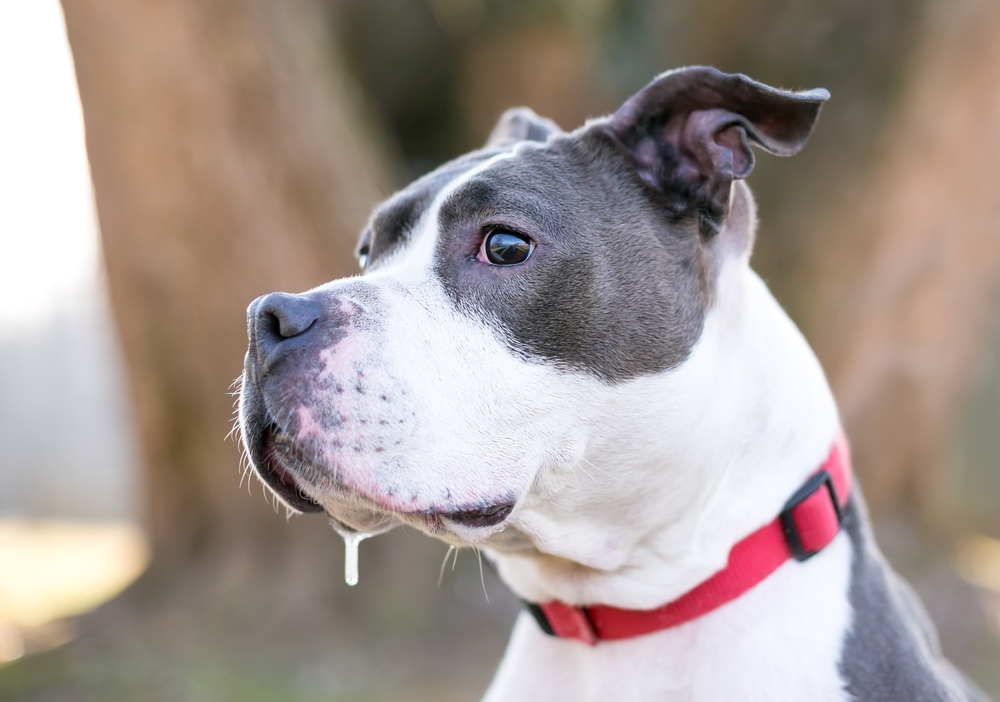
While some drooling is perfectly normal, excessive drooling can be a red flag for stress. Dogs might drool more when they’re nervous or scared, similar to how some people might experience a dry mouth. This behavior is often seen in situations that make your dog uncomfortable, like car rides or vet visits. If drooling peaks during certain activities, it’s worth investigating what might be causing your dog’s discomfort. Remember, drooling can also signify other health issues, so it’s important to rule those out.
Providing a distraction can sometimes help reduce stress-induced drooling. Chew toys or engaging activities can shift their focus away from whatever’s causing their anxiety. Keep an eye on their hydration levels, as excessive drooling can lead to dehydration, especially if coupled with a lack of appetite. If the drooling is sudden and severe, it’s a good idea to consult with your vet to ensure there aren’t any underlying health concerns. Addressing both the physical and emotional needs of your dog can help minimize stress.
9. Destructive Behavior
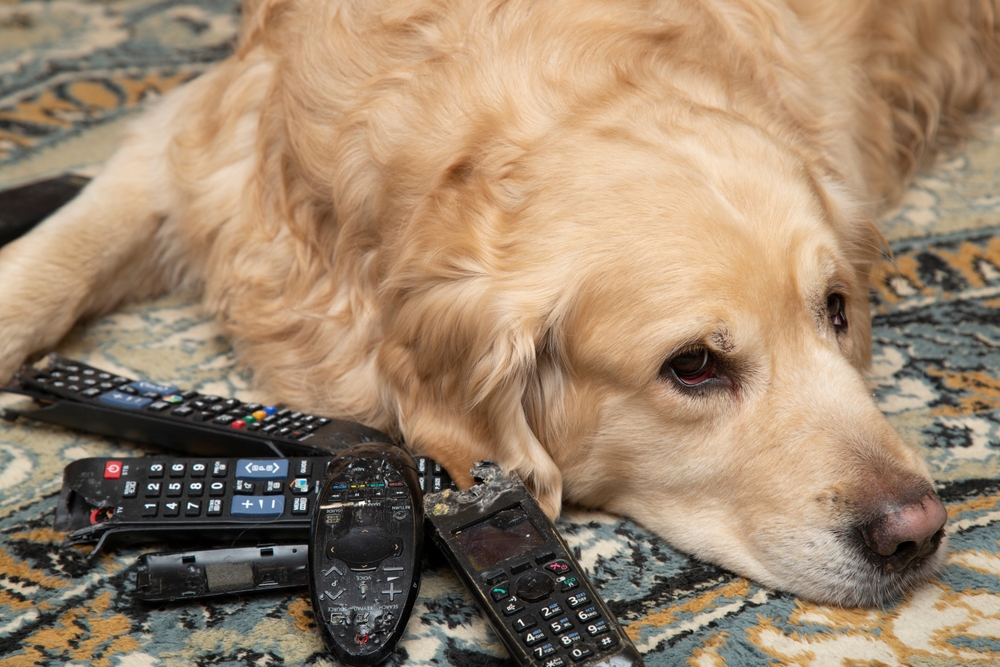
A stressed dog might turn to destructive behavior, like chewing furniture or digging through trash. While this might seem like naughtiness, it’s often a sign that your dog is feeling overwhelmed. Stress can lead to pent-up energy, which your dog might release by tearing through your cushions or gnawing on your shoes. This is especially common in dogs who don’t get enough physical or mental stimulation. A bored dog is more likely to become a destructive dog, so it’s important to channel their energy appropriately.
Increasing your dog’s daily exercise can help reduce this type of behavior. Long walks, playtime, and training sessions can burn off that excess energy and provide mental stimulation. Providing chew toys or engaging puzzles can also keep their mind occupied and away from destructive activities. If necessary, consider crating your dog when you’re not home to prevent them from destroying your belongings. Teaching your dog appropriate ways to deal with stress takes time and patience, but it’s worth the effort.
10. Excessive Shedding

All dogs shed, but if you notice more fur than usual around the house, stress might be a factor. Excessive shedding can be triggered by anxiety, similar to how humans might lose hair when stressed. This can occur during significant changes, like moving to a new home or introducing a new pet. Additional brushing can help manage the shedding and also serve as a bonding activity to reduce your dog’s stress. Regular grooming sessions can also allow you to check for any signs of skin irritation or other issues.
If your dog’s shedding seems linked to stressful events, try to make transitions as smooth as possible. Keeping a consistent routine can provide comfort during times of change. Offering extra attention, affection, and playtime can help reassure your dog that everything is okay. If shedding continues to be excessive, a vet visit can rule out health problems like skin conditions or allergies. Taking proactive steps can help both manage the shedding and ease your dog’s stress.
11. Hypervigilance

A stressed dog might be more on edge, reacting to every little sound or movement. Hypervigilance is a state of heightened alertness, where your dog seems to be waiting for something to happen. This can be exhausting for both you and your dog, as it often leads to difficulty relaxing or sleeping. If your dog is constantly scanning their environment or startling easily, it might be a sign they’re feeling stressed. Identifying the triggers of their hypervigilance can help you address the root cause.
Limiting exposure to stressors can be helpful if you know what sets them off. For example, if your dog becomes anxious during thunderstorms, creating a safe, quiet space for them to retreat to can help. Consistent routines can also provide a sense of security and predictability. Training exercises that focus on relaxation and breathing can be beneficial in teaching your dog to calm down. If hypervigilance persists, consulting with a behaviorist can offer strategies to help your dog feel more at ease.
12. Panting
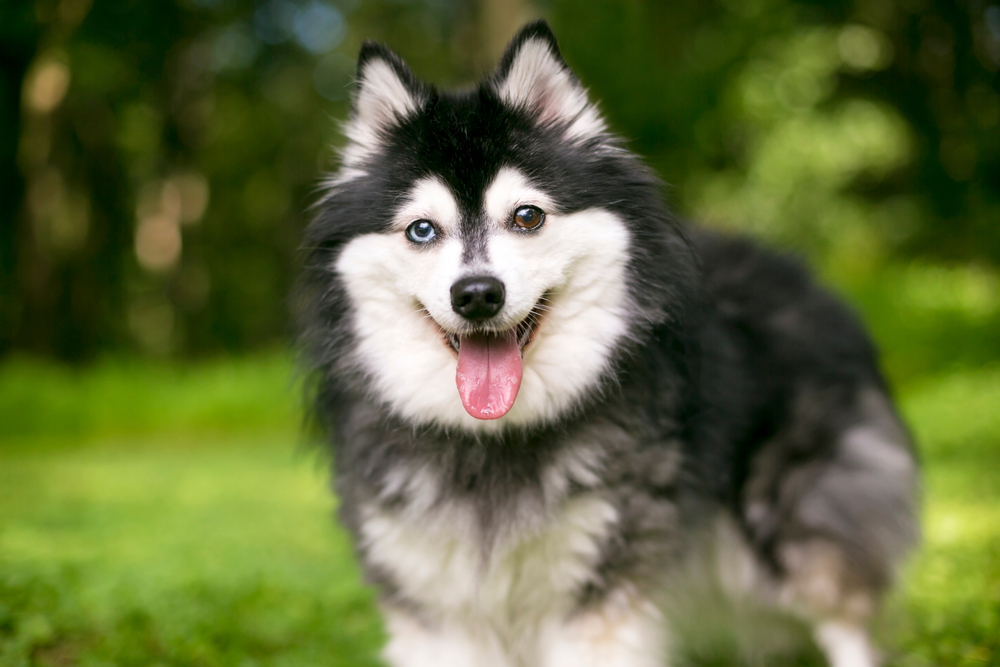
Dogs pant to regulate their body temperature, but panting can also indicate stress. If your dog is panting heavily and it’s not due to heat or exercise, stress could be the culprit. This type of panting might occur during stressful situations, like a visit to the vet or when they’re left alone. It’s important to differentiate between normal panting and stress-induced panting by observing the context in which it happens. If your dog seems agitated and is panting more than usual, it might be time to look for stressors.
Trying to create a calm environment can help reduce stress-induced panting. Ensure your dog has a quiet place to retreat to, and consider playing calming music to soothe their nerves. You might also explore the use of natural calming aids, like lavender or chamomile. If panting continues to be a concern, especially if paired with other stress behaviors, reach out to your vet for guidance. Understanding the difference between normal and stress-related panting can help you intervene more effectively.
13. Changes In Sleep Patterns
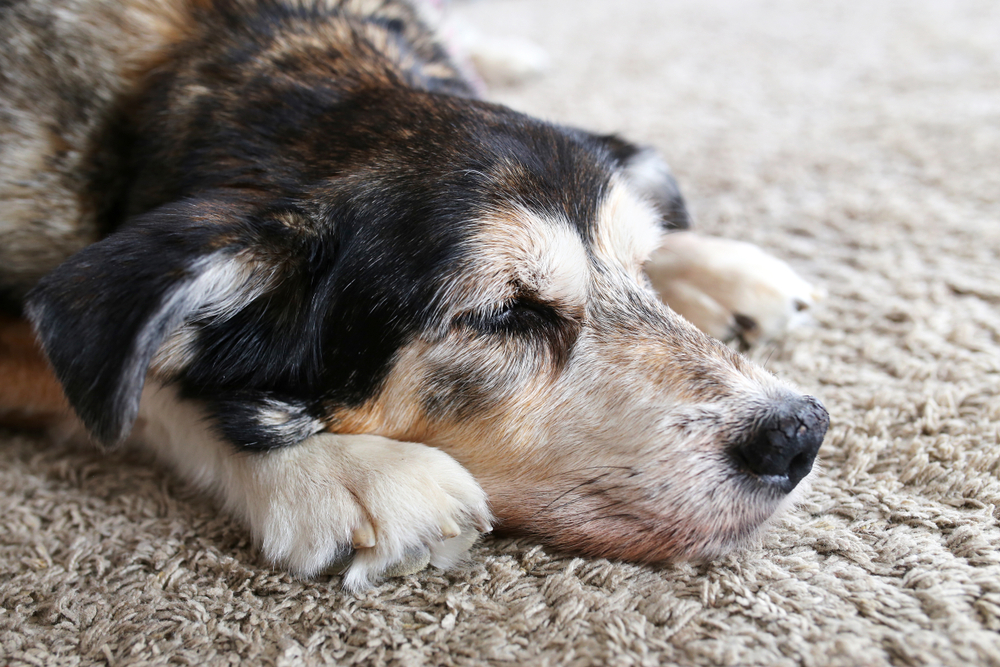
If your dog is sleeping more or less than usual, stress might be affecting them. Just like humans, dogs can experience changes in sleep patterns when they’re stressed or anxious. If your normally active dog is suddenly lethargic, or if your calm dog is waking up more frequently, it’s worth investigating. Consider any recent changes in their environment or routine that could be contributing to their stress. Ensuring a comfortable sleeping area and maintaining a consistent schedule can help your dog get the rest they need.
Creating a calming bedtime routine could also support better sleep. This might include a relaxing walk, gentle petting, or a cozy bed in a quiet part of the house. If changes in sleep patterns persist, consulting your vet can help rule out other health issues. Understanding your dog’s sleep habits and recognizing when they’re off can help you provide the right support. Addressing the root cause of their stress is key to helping your dog rest easy.
14. Tail Tucking

When your dog’s tail is tucked between their legs, it’s often a sign of fear or stress. This behavior signals that your dog is feeling threatened or anxious. Tail tucking can be observed during encounters with other dogs, loud noises, or unfamiliar environments. It’s a clear message that your dog feels uneasy and needs some reassurance. Paying attention to what causes your dog’s tail to tuck can help you identify stressors and address them effectively.
Offering comfort can be as simple as gentle petting or speaking softly to help them feel safe. Avoid forcing your dog into situations that cause them anxiety, and instead, focus on gradual exposure and positive reinforcement. Encouraging confidence-building activities, like training or agility, can also help them feel more secure. Recognizing when your dog is feeling stressed and taking steps to comfort them is an important part of being a pet parent. Your support can make a big difference in helping them navigate and overcome their fears.
